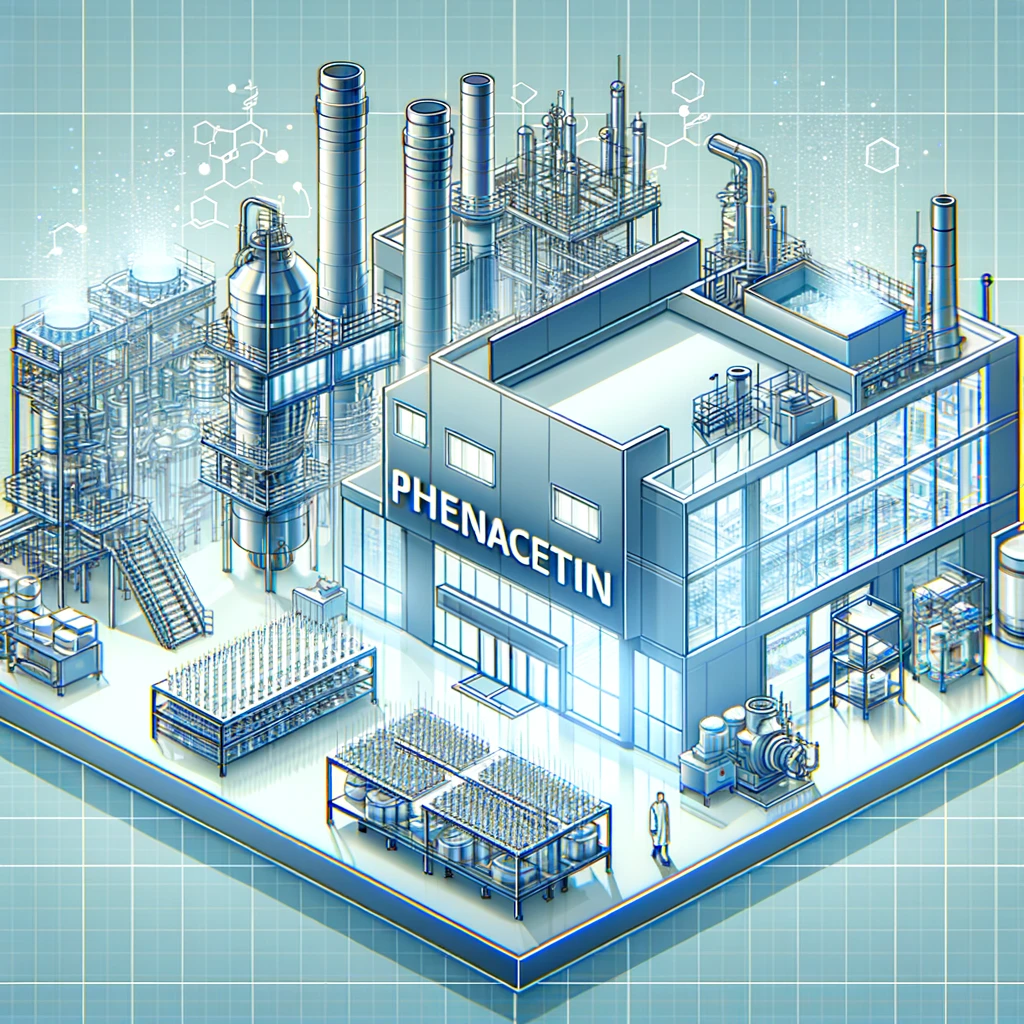Phenacetin Supply Dynamics: Navigating Global Demand with Quality and Efficiency
In a world where the balance between demand and supply defines the success of industries, the role of Phenacetin stands out in its significance. This article sheds light on the various facets of phenacetin supply, emphasizing the need for quality and efficiency in meeting global demands.

1. Introduction
Phenacetin, a compound with a storied history in pharmaceuticals and other industries, is vital in global markets. Its journey from a mere chemical compound to a critical supply chain component encapsulates a narrative of innovation, regulation, and adaptation. Understanding the nuances of its supply is essential for stakeholders across various sectors.
2. Historical Context of Phenacetin Supply
Phenacetin's origins trace back to the late 19th century when it was first synthesized. Initially hailed as a wonder drug, it found widespread use as a painkiller and fever reducer. Over the decades, the production of Phenacetin evolved, influenced by medical research, regulatory changes, and shifts in consumer demand. This historical perspective is crucial to comprehend the current supply landscape.
- Early Uses: Analgesic and antipyretic properties.
- Manufacturing Evolution: Changes in synthesis methods over time.
- Regulatory Impact: Shifts due to health concerns and regulations.
3. Current Global Demand for Phenacetin
Today, Phenacetin is integral to various industries, from pharmaceuticals to research and development. Its demand is not uniform, showing significant variations across different geographical regions and sectors.
- Pharmaceutical Necessity: Key role in certain medical formulations.
- Geographical Variations: High demand in specific global regions.
4. Challenges in Supplying Phenacetin
The supply of Phenacetin has its challenges. From logistical complexities to regulatory compliance, suppliers face many challenges that impact efficiency and quality.
- Logistical Complexities: Ensuring timely and safe delivery.
- Regulatory Hurdles: Navigating global and local regulations.
- Quality Control: Maintaining high standards amidst these challenges.
5. Innovations in Production and Distribution
The industry has witnessed significant innovations in response to these challenges. Technological advances have revolutionized the production and distribution of Phenacetin, paving the way for more efficient and reliable supply chains.
- Technological Advancements: Modern manufacturing techniques.
- Efficient Distribution Models: New approaches to logistics and supply chain management.
The supply of Phenacetin, though fraught with challenges, is a testament to the resilience and adaptability of global supply chains. Understanding its history, current landscape, and the innovations shaping its future is vital for stakeholders involved in its supply. As the market evolves, the focus on quality and efficiency will remain paramount in meeting global needs.
6. Quality Control and Standards
Quality control stands as a cornerstone in the supply of Phenacetin. Given its significant applications, particularly in pharmaceuticals, maintaining high-quality standards is not just a matter of compliance but a moral obligation. Suppliers and manufacturers are bound by stringent international standards that ensure the Phenacetin's safety, efficacy, and reliability in various applications.
- Quality Assurance Protocols: Rigorous testing procedures to ensure purity and safety.
- International Compliance: Adhering to global health and safety standards.
- Continuous Monitoring: Regular quality checks throughout the supply chain.
These measures safeguard against contamination, impurities, and inconsistencies in phenacetin batches, thus ensuring that only the highest quality product reaches the market.
7. Sustainable and Ethical Supply Practices
In the modern era, companies are increasingly held accountable for their environmental footprint and ethical practices in the supply chain of any product, including Phenacetin. This includes responsible sourcing raw materials, reducing carbon emissions, and ensuring fair labor practices.
- Environmental Responsibility: Implementing eco-friendly manufacturing and distribution processes.
- Ethical Sourcing: Ensuring raw materials are sourced responsibly without exploiting resources.
- Social Responsibility: Fair labor practices and contributing to community welfare.
Adopting these practices not only contributes to a better planet but also enhances suppliers' brand reputation and trustworthiness in the global market.
8. Case Studies: Success Stories in Supplying Phenacetin
Several companies and regions have set benchmarks for Phenacetin's efficient and ethical supply. These success stories serve as models for best practices and innovative strategies in the industry.
Case Study 1: Technological Innovation in Manufacturing
One notable example is a European pharmaceutical company that revolutionized phenacetin production through advanced synthesis techniques. This resulted in higher yield purity and significantly reduced environmental impact.
Case Study 2: Efficient Distribution Network
Another success story comes from Asia, where a distributor implemented a cutting-edge logistics management system. This system optimized the supply chain, reducing delivery times and costs while maintaining product integrity.
Case Study 3: Adherence to Sustainability and Ethics
A North American company demonstrated exceptional commitment to sustainability and ethical practices. They sourced raw materials from certified suppliers, ensured a zero-waste manufacturing process, and actively participated in community development.
9. The Future of Phenacetin Supply
The future of phenacetin supply is shaped by ongoing technological advancements, changing regulatory landscapes, and evolving market demands. There is a growing emphasis on precision medicine, which could see Phenacetin playing a more targeted role in treatment regimens.
- Technological Advancements: Emerging technologies like AI and IoT in supply chain management.
- Regulatory Changes: Adaptation to new health and safety standards.
- Market Evolution: Shifting demands and new applications of Phenacetin.

As the industry continues to evolve, the agility and adaptability of suppliers and manufacturers will be key to their success.
The journey of Phenacetin from a laboratory synthesis to a vital global commodity encapsulates the essence of innovation, adaptability, and responsibility. Understanding the challenges and innovations in its supply chain offers valuable insights into the pharmaceutical industry and broader aspects of global trade and ethics. As we move forward, the balance of quality, efficiency, sustainability, and ethics will continue to shape the future of phenacetin supply, ensuring it meets global needs with the highest standards.
- Company info
- About US
- Send Inquiry
- News
- FAQs
- sitemap
- User Center
- Tracking Order
- Forget Password
- My Orders
- My Account
- Register
- Join our community
Copyright © 2020-2023 BenzocaineSupplier.com All Rights Reserved.
